Many trekkers set their sights on the lofty peaks of the Everest region when they think of Nepal. After all, who wouldn't want to tread the path that leads to the base of the highest mountain in the world? But unbeknownst to many, another region in Nepal holds an equal, if not a greater charm: the Annapurna region. So, why should you consider trekking in Annapurna over Everest? Let's dive in to explore.
Annapurna Region
Nestled in the heart of the Himalayas, the Annapurna region offers an unmatched trekking experience that beautifully combines stunning natural beauty, rich cultural immersion, and diverse trekking routes. Its accessible location from the tourist hub of Pokhara, which can be reached easily by road from Kathmandu, provides a convenient starting point for treks. The region is home to a plethora of trails that cater to both novice and experienced trekkers, ranging from the challenging Annapurna Circuit to the serene Mardi Himal Trek. As you traverse these paths, you'll experience the warm hospitality of ethnic communities like the Gurungs and Thakalis, explore traditional villages and monasteries, and savor local cuisines. The trails, though less crowded than the famed Everest region, boast equally mesmerizing views of towering snow-capped peaks, lush rhododendron forests, and arid high-altitude landscapes. Furthermore, trekking in the Annapurna region is generally more cost-effective, making it an ideal choice for budget-conscious travelers. All these aspects contribute to a unique trekking experience that goes beyond just mountain vistas, offering a wholesome journey into the heart of Nepal's Himalayan landscape and culture.

Everest Region
Located in the Solu-Khumbu district of Nepal, the Everest region is the epitome of Himalayan adventure, offering some of the most iconic trekking routes in the world, such as the Everest Base Camp trek and the Gokyo Lakes trek. Famous for its staggering altitudes, rugged terrains, and the grandeur of the world's highest peak, Mount Everest, the region provides an unrivaled opportunity for high-altitude trekking. Starting with a thrilling flight to the mountain airstrip at Lukla, these trails weave through Sherpa villages, where you get a glimpse of the unique Sherpa culture, influenced heavily by Tibetan Buddhism. The region's rich biodiversity is another highlight, with Sagarmatha National Park, a UNESCO World Heritage site, offering a sanctuary for several endangered species. While the trekking routes can be more crowded and more expensive compared to other regions, the sheer prestige of trekking in the shadow of Mount Everest, coupled with breathtaking panoramic mountain views, high-altitude lakes, and centuries-old monasteries, make the Everest region a bucket-list destination for adventurers worldwide.
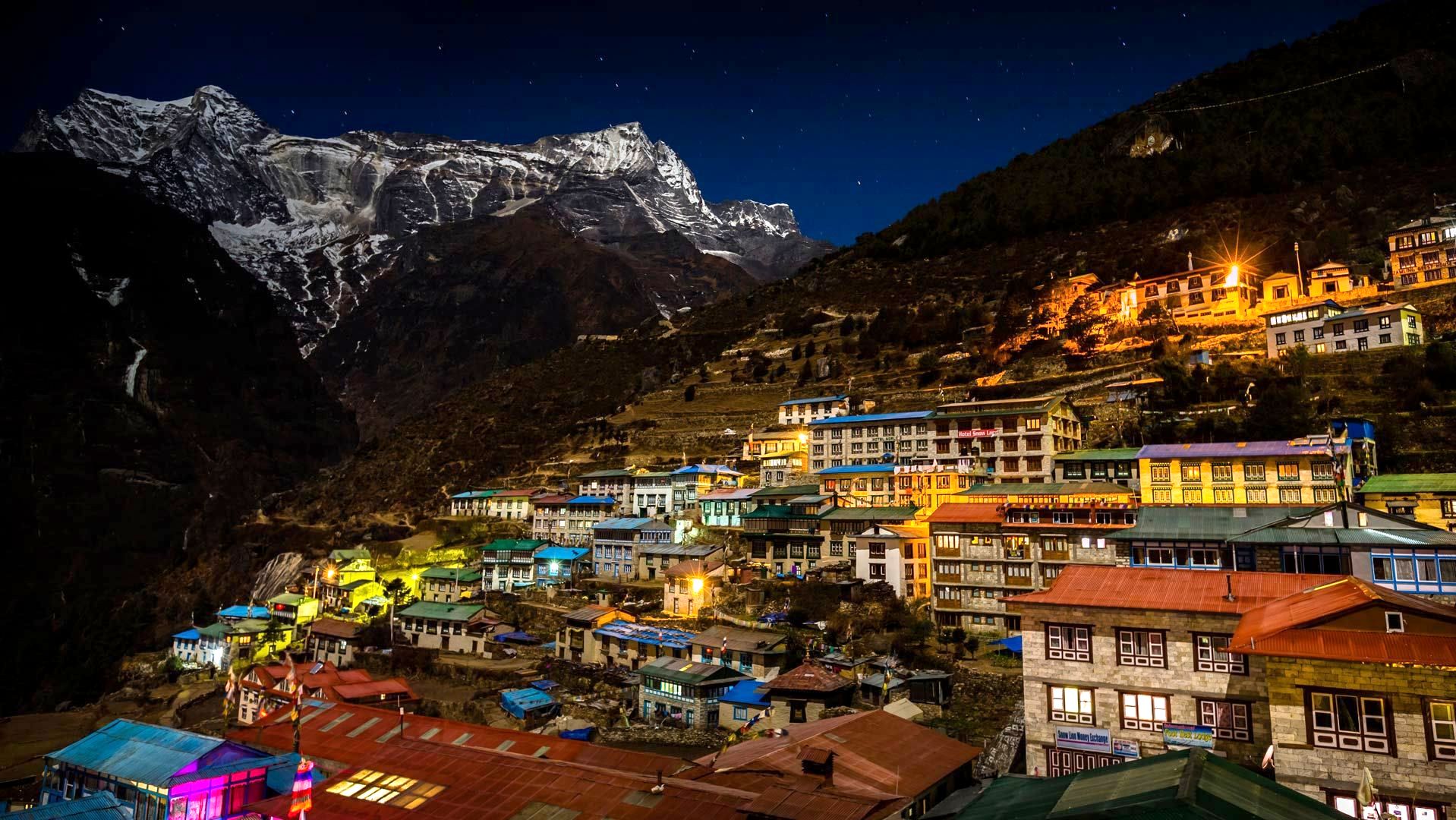
Here are the reasons The Allure of Annapurna: Why It Distinguishes Itself From Everest
Variety is the Spice of Life: Diverse Trekking Routes
The Annapurna region offers an array of treks that can cater to a wide spectrum of physical abilities, preferences, and timelines. Let's explore some of the key treks in the Annapurna region:
Annapurna Circuit Trek: Known to be one of the most varied and holistic treks in the world, the Annapurna Circuit Trek circles the mighty Annapurna massif. This trail offers you the unique opportunity to appreciate the diverse Nepalese landscape and culture. Over 2-3 weeks, you'll encounter subtropical forests, paddy fields, alpine pastures, and desert plateaus, and witness breathtaking views of some of the world’s highest peaks.
Annapurna Base Camp Trek: If you want a shorter trek (typically 7-10 days) but still crave the experience of getting close to the towering peaks, the Annapurna Base Camp Trek could be the one for you. The journey to the foot of the 10th highest mountain in the world brings you face to face with the impressive south face of Annapurna and offers dramatic mountain panoramas.
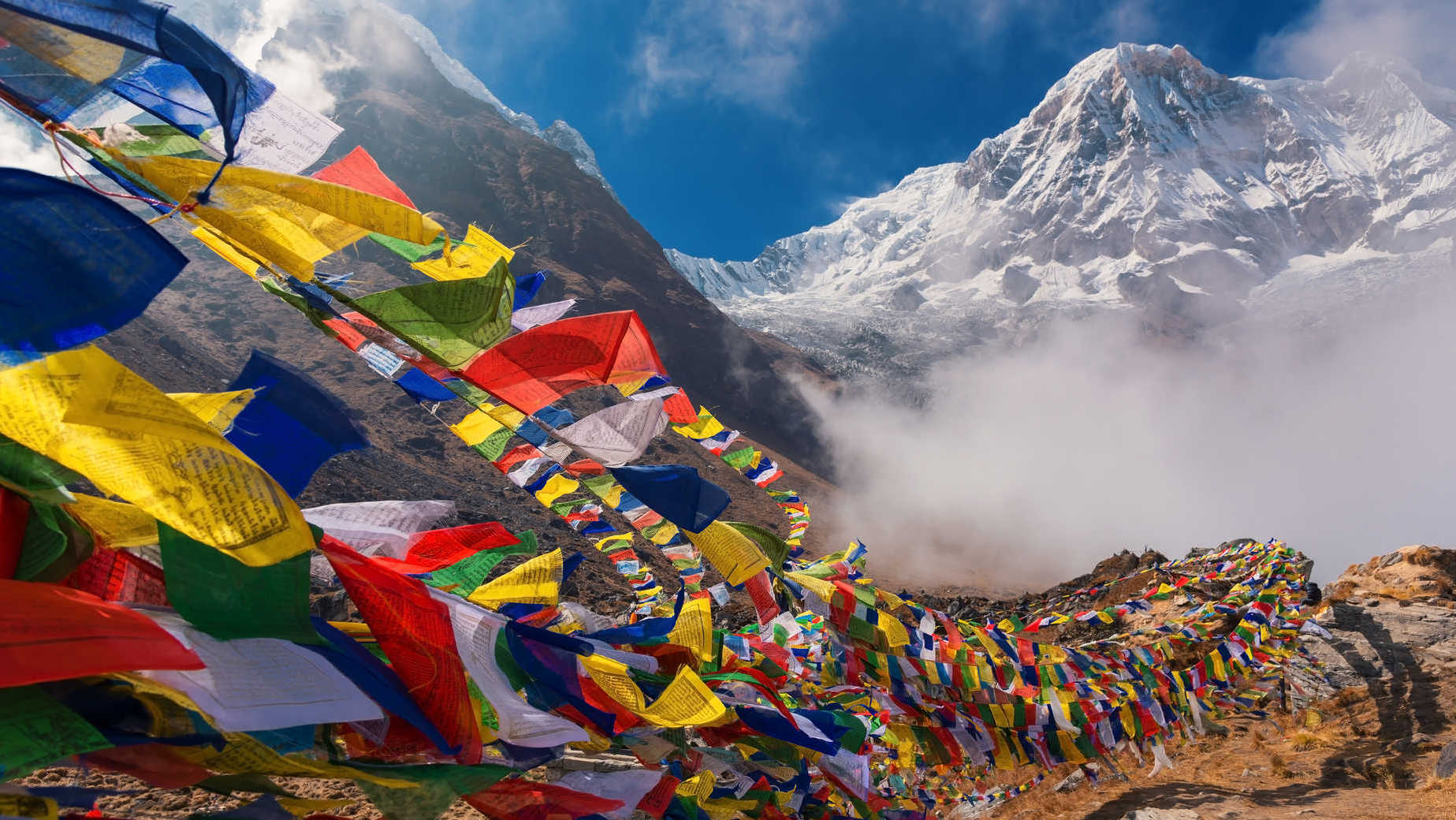
Ghorepani Poon Hill Trek: Ideal for beginners or those short on time, this trek allows you to immerse yourself in the majestic beauty of the Himalayas without the need for significant acclimatization. The trek takes you through beautiful rhododendron forests, traditional Gurung villages, and offers a phenomenal sunrise view over the snow-capped peaks from Poon Hill.
Mardi Himal Trek: An off-the-beaten-path route, this trek offers solitude and close-up views of the Mardi Himal, Machapuchare (Fishtail), Annapurna South, and Hiunchuli. It is an excellent choice for those who wish to escape the more crowded trails and experience the unspoiled nature and culture of the Annapurna region.
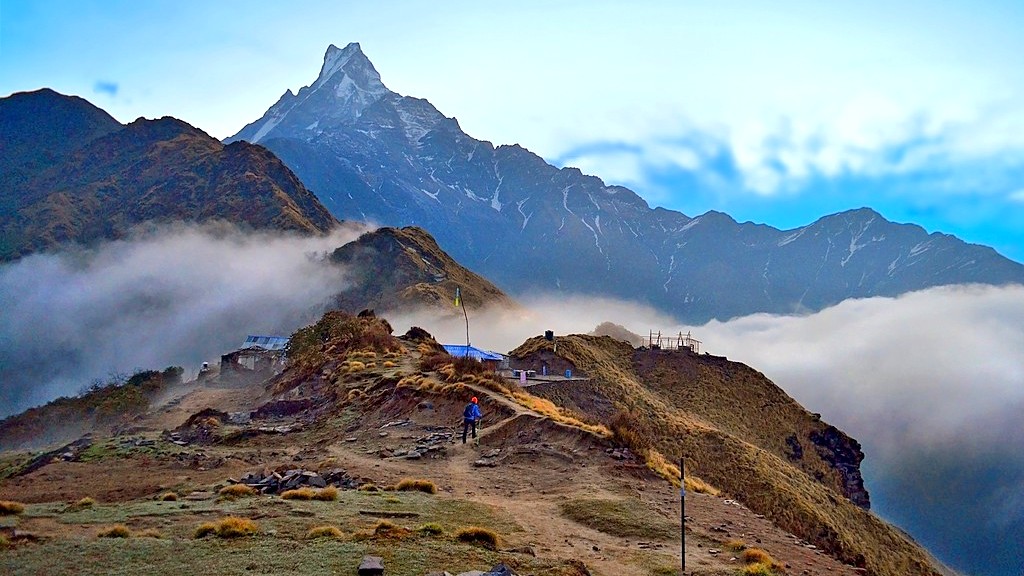
Upper Mustang Trek: For a truly unique experience, consider the Upper Mustang Trek. Known as the 'Last Forbidden Kingdom', the Upper Mustang area has preserved its traditional Tibetan Buddhist culture. The lunar-like landscapes, ancient monasteries, and the fabled walled city of Lo Manthang make this trek an experience unlike any other.
The Everest region, while spectacular, is best known for the classic Everest Base Camp Trek and a few alternative treks such as Gokyo Lakes, the Three Passes Trek, and the Jiri to Everest Base Camp route. While these are extraordinary treks in their own right, they might not offer the same level of diversity as the Annapurna region in terms of landscapes, cultural experiences, and difficulty levels.
Experience the Cultural Tapestry: An Immersive Cultural Journey
The cultural immersion in the Annapurna region is indeed a unique and enriching experience that adds a different dimension to your trekking adventure. Let's delve a bit more into the ethnic cultures you will encounter:
Gurung Culture: As you trek through villages such as Ghandruk and Landruk on the Annapurna Base Camp or Ghorepani Poon Hill route, you'll encounter the Gurung people. Known for their distinct traditions and warm hospitality, Gurungs have a rich history of serving as Gurkha soldiers. Visiting a Gurung village, you can observe traditional houses, taste local delicacies, and even enjoy cultural performances of Gurung dances and songs.

Thakali Culture: In the lower Mustang region and around Jomsom, you'll meet the Thakalis. Traditionally, traders, Thakalis are also known for their culinary expertise. Their Thakali Dal Bhat, a Nepalese staple food, is famous all over Nepal. The Thakali culture is a perfect blend of Tibetan and Nepalese traditions, reflected in their lifestyle, art, and architecture.
Tibetan-influenced Cultures: As you venture into the higher, arid zones of the Annapurna region, like Upper Mustang, you will experience a culture heavily influenced by neighboring Tibet. From their language and dress to their religion and festivals, the influence of Tibetan Buddhism is profound. The walled city of Lo Manthang in Upper Mustang is home to some of the oldest Tibetan Buddhist monasteries in the world.
These cultural experiences, paired with the welcoming nature of the locals, add a captivating element to your trek. You're not just passing through breathtaking landscapes; you're also getting an intimate glimpse into the lives of the people who call these highlands home. This cultural immersion is a stark contrast to the Everest region, where the focus is often more on the mountains themselves, and less on the Sherpa culture that predominates there. This makes the Annapurna region a highly favored destination for those seeking a cultural odyssey alongside their trekking adventure.
Access Made Easy: No Flight Required
The accessibility of the Annapurna region is a definite advantage, especially for those with a tight travel schedule or who may be uneasy about small aircraft flights.
No Flight Required: The trekking routes in the Annapurna region start from Pokhara, which is about a 6-7 hour drive from Kathmandu. This means you can avoid the potentially nerve-wracking flight to Lukla that is necessary for most Everest region treks.
Avoid Flight Delays or Cancellations: The Lukla flight is notorious for being delayed or canceled due to weather conditions. This uncertainty can be stressful and might lead to changes in your trekking schedule. On the other hand, a road trip to Pokhara is generally less dependent on weather conditions and can be more predictably planned.
Explore Pokhara: Starting your trek from Pokhara has another advantage - you get to explore this beautiful lakeside city, often referred to as the 'tourist capital' of Nepal. Pokhara is renowned for its stunning Phewa Lake, adventure sports like paragliding, and sights like the World Peace Pagoda and the International Mountain Museum. Spending a day or two acclimatizing and exploring Pokhara before embarking on your trek can be a delightful addition to your overall trip.
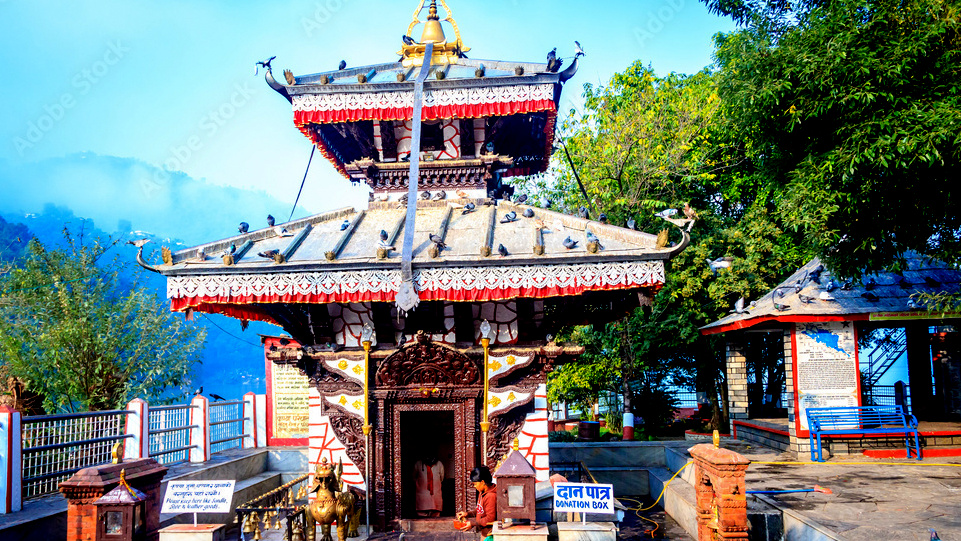
Varied Transportation Options: You also have several options for your journey from Kathmandu to Pokhara - from tourist buses and private taxis to domestic flights. These options provide flexibility in terms of cost, comfort, and travel time, allowing you to choose what best suits your needs.
The straightforward accessibility of the Annapurna region makes it an attractive option for many trekkers. It not only simplifies the logistics of your trek but also adds an extra layer of cultural and recreational experience through the exploration of Pokhara.
An Economical Adventure: Lower Costs
The Annapurna region is generally more cost-effective, making it an excellent choice for budget-conscious travelers or backpackers. Here are some areas where you'll likely save:
Permit Costs: The permit costs for the Annapurna region are generally lower. You'll need the Annapurna Conservation Area Permit (ACAP) and the Trekkers’ Information Management Systems (TIMS) card. These permits are cheaper in comparison to the Sagarmatha National Park permit required for the Everest region.
Transportation Costs: As we discussed earlier, you don't have to factor in the cost of a flight to start your trek in the Annapurna region, unlike the Everest region. The cost of getting to the starting point of your trek (usually a bus or car ride to Pokhara from Kathmandu) is significantly cheaper than a flight to Lukla.
Accommodation and Food: The cost of teahouses (lodges) along the trekking routes in the Annapurna region is generally less expensive than in the Everest region. The same goes for food. Prices increase as you go higher and further from the city due to transportation costs, but in general, you'll find the costs in the Annapurna region to be more budget-friendly.
Guides and Porters: The cost of hiring guides and porters can also be a bit cheaper in the Annapurna region compared to the Everest region, depending on the specific trek you're doing.
It's important to remember that while trekking in the Annapurna region can be done on a budget, it's crucial not to compromise on essential aspects like proper equipment, acclimatization days, insurance, and safety measures. A well-planned trek, even with a tighter budget, can still be a safe, rewarding, and unforgettable experience.
Enjoy the Serenity: Fewer Crowds
One of the charms of trekking in the Annapurna region is the opportunity to escape the crowds and enjoy the tranquility of the Himalayas.
Less Crowded Trails: The Annapurna region, though popular, tends to be less crowded than the iconic Everest Base Camp Trek. This is particularly true for some of the less-traveled paths, such as the Mardi Himal Trek, Nar Phu Valley Trek, or the trek to the secluded Tilicho Lake, which often see fewer trekkers.
Undisturbed Nature: Fewer trekkers also mean quieter trails where you can enjoy the serene beauty of the region without interruption. This solitude can allow for a more intimate experience with nature, where the dramatic landscapes, diverse flora and fauna, and majestic mountains can be savored in peace.
Authentic Cultural Experience: Venturing into less-traveled trails also provides a more authentic cultural experience. You can visit remote villages that remain relatively untouched by tourism and engage more closely with the local culture.
Unique Experience: Finally, the less crowded trails in the Annapurna region offer the opportunity for a unique trekking experience. While the feeling of accomplishment that comes from reaching the Everest Base Camp is undeniable, there's something equally special about wandering off the beaten track and exploring the less-known corners of the Himalayas.
If a peaceful trek through stunning yet serene landscapes is what you're after, the Annapurna region could very well be the perfect fit for you. Whether you choose the solitude of the Mardi Himal Trek or the rich cultural tapestry of the Upper Mustang, the Annapurna region promises an unforgettable journey in the heart of the Himalayas, away from the bustling crowds.
Weather and Climate in Annapurna Region
The Annapurna region, like much of Nepal, has a monsoon-influenced climate with four main seasons: spring, summer (monsoon), autumn, and winter. However, the actual conditions you'll experience can depend on the altitude and the specific part of the region you're in.
Spring (March to May)
Spring is one of the best times to trek in the Annapurna region. Temperatures are relatively moderate, with daytime temperatures at lower elevations ranging from 10°C to 30°C (50°F - 86°F). As you go higher, the temperatures decrease, often dropping below freezing at night. The skies are usually clear, offering stunning views of the mountains. This is also the season when rhododendrons, the national flower of Nepal, bloom, adding a splash of color to the trails.
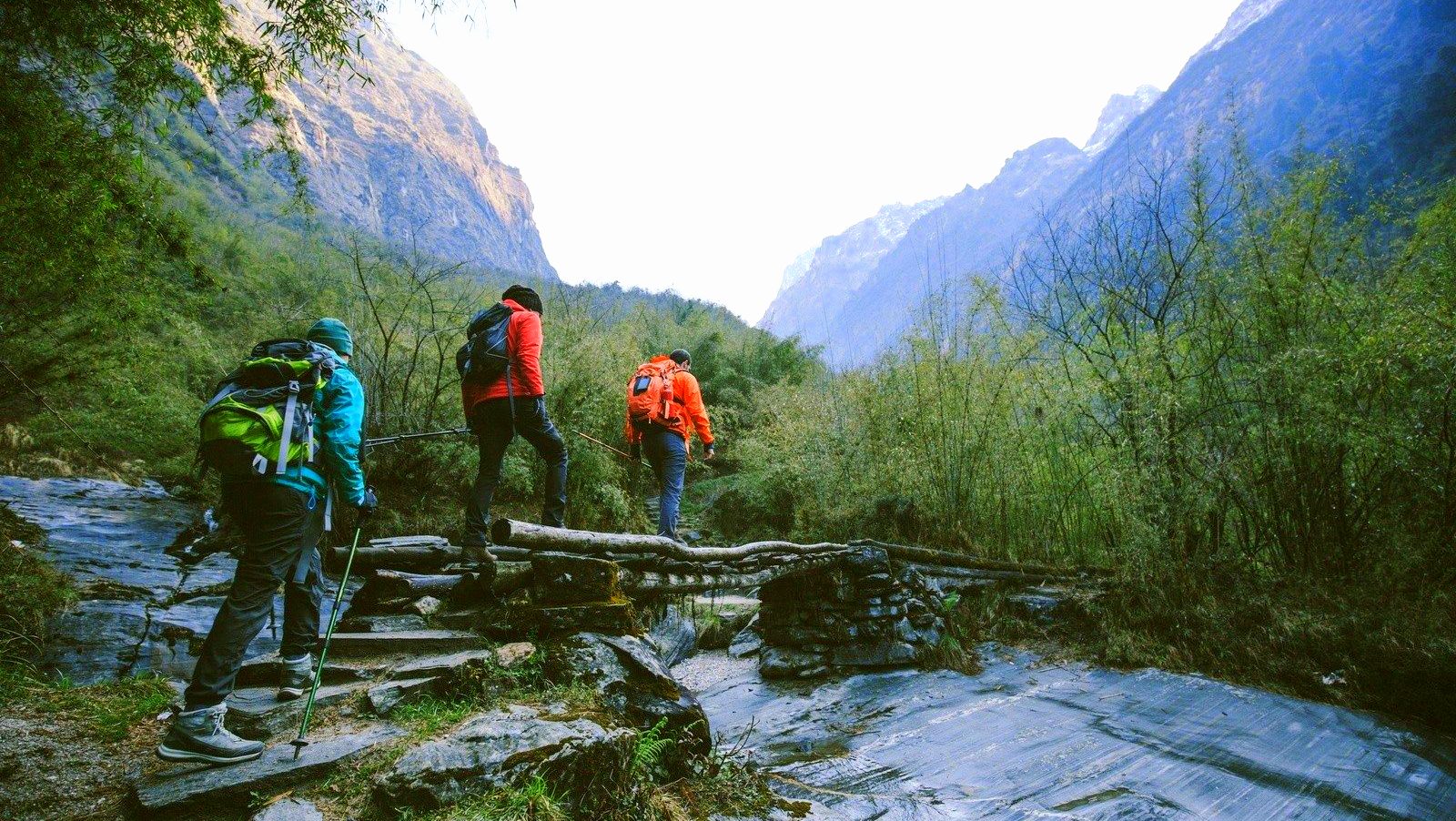
Summer/Monsoon (June to August)
This is the rainy season in Nepal, with regular and sometimes heavy downpours, especially in the afternoons and evenings. Landslides can occur in some areas. Temperatures can get quite warm, especially at lower elevations, often exceeding 30°C (86°F). However, the upper Mustang region in the Annapurna area lies in the rain shadow of the Himalayas and remains relatively dry, making it a viable option for summer treks.
Autumn (September to November)
Autumn is another ideal time for trekking in the Annapurna region. The monsoon rains clear the dust, resulting in crisp, clear skies and exceptional mountain views. Temperatures are similar to spring, comfortable during the day but dropping below freezing at night at higher altitudes.
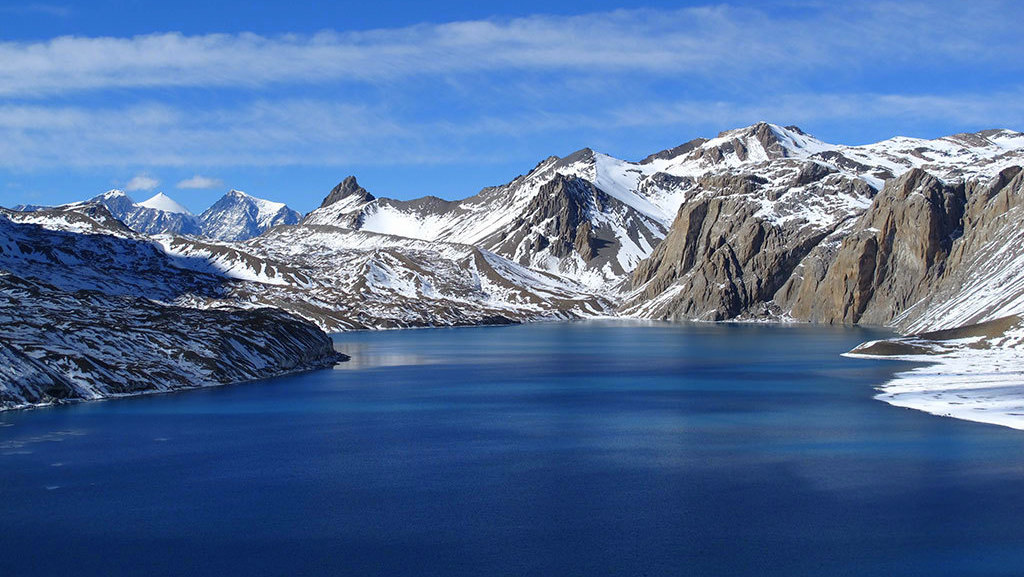
Winter (December to February)
Winter in the Annapurna region can be very cold, especially at higher altitudes, with temperatures often dropping to -10°C (14°F) or lower. Snowfall can block some of the higher passes, such as the Thorong La pass on the Annapurna Circuit. However, lower-elevation treks like the Ghorepani Poon Hill trek can still be undertaken in winter.
Remember that weather in the mountains can be unpredictable, so it's always best to be prepared for a variety of conditions, regardless of when you're trekking. Proper acclimatization and a flexible itinerary are also crucial for a safe and enjoyable trek in the Annapurna region.
Highlights of the Annapurna Region
- Breathtaking panoramic views of some of the world's highest peaks, including Annapurna I, Dhaulagiri, and Machapuchare.
- Diverse trekking routes, from the challenging Annapurna Circuit to the tranquil Mardi Himal trek.
- Cultural immersion in traditional Nepalese villages, experiencing the unique customs and hospitality of ethnic groups like the Gurungs and Thakalis.
- Exploration of religious sites, such as the Muktinath Temple, a sacred place for both Hindus and Buddhists.
- Remarkable biodiversity in the Annapurna Conservation Area, Nepal's largest protected area.
- The stunning, mirror-like Tilicho Lake, is one of the highest lakes in the world.
- Picturesque rhododendron forests are particularly vibrant during the spring bloom.
- The vibrant city of Pokhara, often used as a starting or ending point for treks, is known for its lakes, adventure activities, and laid-back atmosphere.
- The traditional tea houses along the trekking routes offer warm hospitality and a taste of local cuisines.
- Unique wildlife sightings, including endangered species like snow leopards and red pandas, particularly in the lower forested regions.
Tips for trekking in the Annapurna Region
- Acclimatize Properly: Always take time to acclimatize to the high altitude to prevent Acute Mountain Sickness (AMS).
- Hire a Guide or Porter: Especially if you're new to trekking, a local guide or porter can help navigate the trails and manage your load.
- Pack Wisely: Make sure you have all the essentials, including warm clothing, rain gear, good hiking boots, a water purifier, and snacks.
- Stay Hydrated: Drink plenty of water to help your body acclimatize and prevent dehydration.
- Start Early: Mornings usually provide clearer views and cooler temperatures, making it the best time to trek.
- Respect Local Culture: Always respect local customs and traditions, particularly when visiting religious sites.
- Purchase Travel Insurance: Make sure your travel insurance covers high-altitude trekking and possible helicopter evacuation if needed.
- Leave No Trace: Carry out all your trash and follow the principles of sustainable tourism to protect the environment.
- Be Prepared for Weather Changes: Weather in the mountains can change rapidly, so be prepared for a variety of conditions.
- Stay Healthy: Make sure to wash your hands frequently and only eat well-cooked food to avoid getting sick.
Both the Everest and Annapurna regions offer their unique charms and challenges. But for those who seek a trek that combines not only the raw allure of the Himalayan peaks but also a rich cultural tapestry, diverse trekking routes, easy accessibility, and an escape from the bustling crowds, the Annapurna region certainly stands out.
Trekking in the Annapurna region is more than just a physical journey to some of the world's highest peaks - it's an exploration into the heart of Nepalese culture and an immersion into stunning landscapes that shift from lush rhododendron forests to high altitude desert within a few days. It's a journey that invites you to experience the famed Nepalese hospitality firsthand in traditional teahouses, taste local cuisines, and learn about age-old traditions.
The relative ease of access and cost-effectiveness of Annapurna treks can be appealing for many trekkers, particularly those traveling on a tight schedule or budget. Finally, the lesser-crowded trails provide a sense of tranquility and intimacy with nature, which can be a much-needed respite in today's fast-paced world.
So while the allure of Everest is undeniable, the Annapurna region offers a holistic Himalayan experience that can be just as rewarding, if not more. The decision ultimately depends on what you seek from your Himalayan adventure. But one thing is for sure - whether you choose Everest or Annapurna, the majesty of the Himalayas promises an unforgettable experience.
Frequently Asked Questions (FAQs) for Why Annapurna and not the Mount Everest Region?
Q: What makes the Annapurna region distinct from the Everest region?
A: The Annapurna region boasts a diverse trekking landscape, rich cultural immersion, easier accessibility, cost-effectiveness, and relatively fewer crowds compared to the Everest region.
Q: Is the Annapurna region suitable for beginner trekkers?
A: Absolutely! The Annapurna region offers a range of treks suitable for all levels, including beginner-friendly treks like the Ghorepani Poon Hill Trek.
Q: How is the accessibility to the starting point of treks in both regions?
A: Treks in the Annapurna region typically start from Pokhara, which is accessible by road from Kathmandu. In contrast, most treks in the Everest region begin with a flight to Lukla, which is dependent on weather conditions.
Q: Why might the Annapurna region be considered more economical than the Everest region?
A: Factors like lower permit fees, no flight costs to begin the trek, and generally cheaper accommodation and food options make Annapurna a more budget-friendly choice.
Q: Is it true that the Everest region is always crowded?
A: The Everest Base Camp trek is incredibly popular and can get crowded, especially during peak seasons. However, there are less-trodden trails in both regions for those seeking solitude.
Q: Are there any cultural experiences unique to the Annapurna region?
A: Yes, trekkers can experience the rich customs of ethnic groups like the Gurungs and Thakali, and witness the warm hospitality of the locals in traditional villages dotted along the Annapurna trails.
Q: Is the scenery in Annapurna comparable to that of Everest?
A: While the Everest region offers iconic views of the world's highest peak, the Annapurna region provides a diverse range of landscapes from subtropical forests to alpine meadows, and panoramic views of several Himalayan giants, making it equally captivating.
Q: Which trekking region is better for wildlife spotting?
A: Both regions have unique fauna, but the Annapurna Conservation Area is renowned for its biodiversity, offering a higher likelihood of spotting diverse wildlife.
Q: Is the risk of altitude sickness the same in both regions?
A: Altitude sickness can occur in both regions, but the risk varies depending on the specific trek and the individual's acclimatization process. It's essential to be aware and prepared in both areas.
Q: Can I trek both the Everest and Annapurna regions in one trip?
A: While possible, it would require extensive planning and time. Each region demands several days to weeks of trekking, so trekkers should allocate enough time for proper acclimatization and rest between the two treks.
Here you can find some of the best Annapurna Region Trekking Packages
Annapurna Base Camp Trek - 15 Days
Annapurna Base Camp Trek - 10 Days
Ghorepani Poon Hill Trek - 10 Days
Mardi Himal Trek - 12 Days
Annapurna in Luxury- 11 Days
Annapurna Circuit Trek - 15 Days
Annapurna Base Camp Heli Trek - 9 Days
If you need any further information, please contact us by email: at [email protected], Phone: at +977- 985 100 5129 (WhatsApp)




